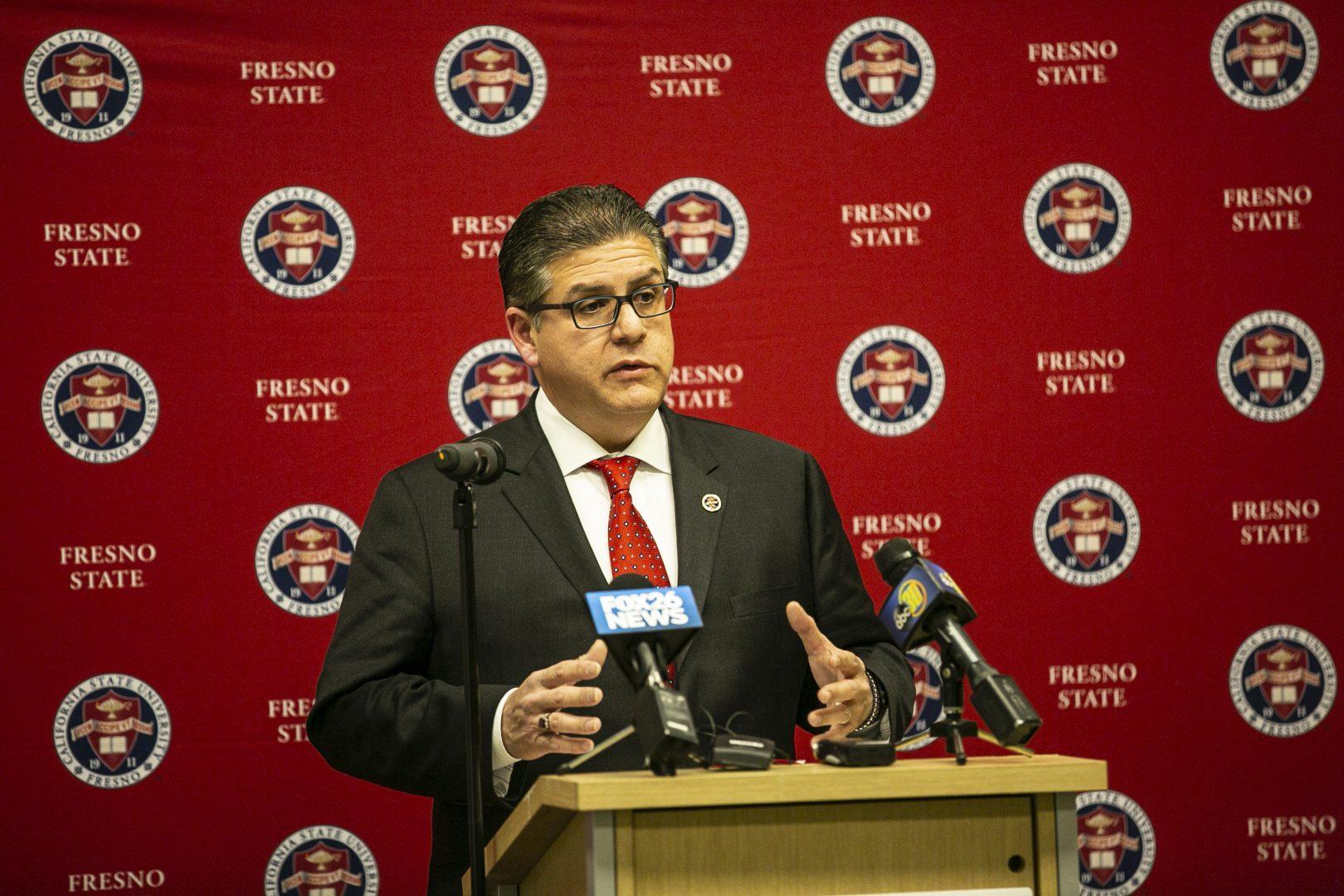California State University students can expect to see as many as 13 campuses serve as COVID-19 vaccination sites in the next few weeks.
“I’m also happy that many of our campuses, 13 of them, have already become sites for vaccinations or will be in the very near term,” CSU Chancellor Joseph I. Castro said Monday during a virtual press conference.
The 13 campuses that are, or will be, operating as vaccination sites include CSU Long Beach, Los Angeles, Bakersfield, Maritime Academy, Monterey Bay, Northridge, Cal Poly Pomona, Sacramento, San Diego, San Francisco, San Jose, San Marcos and Stanislaus.
Castro reiterated that the CSU system is still committed to having a majority of in-person classes in the fall, and he said it is a reasonable goal based on what he has heard from medical experts.
In order to return in the fall, vaccines are a major priority for the CSU, Castro said.
“The focus right now for the CSU is to get as many vaccines as possible in our communities and to inspire our students and faculty and staff to take the opportunity to get vaccinated,” he said.
While Castro said the COVID-19 vaccine will not be a requirement, he anticipates students will need to continue to social distance and wear masks.
Castro also announced the CSU system is working on a new version of a paid leave program for faculty. Previously, faculty members were utilizing the CSU’s paid leave program, COVID-19 Paid Administrative Leave (CPAL), and the federal government’s leave program, Families First Coronavirus Response Act.
CPAL granted 256 hours of paid leave to CSU employees, and both programs expired on Dec. 31. With no benefits in place, many faculty members were upset when no extension of the program was announced, including John Beynon, Fresno State English professor and president of the California Faculty Association (CFA) — Fresno Chapter.
“I feel like the administration should be ashamed of itself,” Beynon said on Jan. 27 in an interview with The Collegian. “Shame on the CSU for doing this, and for failing to provide some kind of relief for folks [faculty parents] who are really kind of like doing incredibly heroic work by making sure that the people of California continue to have access to an education through the CSU, but they’re doing so under such absolutely adverse and difficult circumstances.”
Castro said the new leave program will look very similar to CPAL. However, CPAL might not benefit everyone.
When CPAL was in place, Beynon said the CSU system made both programs very difficult for faculty to take advantage of. “It wasn’t created in such a way as to really be applied fairly and more equitably to faculty parents,” he said.
Beynon added that faculty members, especially faculty parents, were required to answer “invasive questions” in order to qualify for CPAL benefits, which included assumptions about a person’s marital status and the availability of daycare centers.
“There are other factors involved, that would cause someone to think twice about putting their child in a daycare center during a pandemic,” Beynon said.
For the upcoming fall semester, many campuses are giving differing statements about their plans. CSU Chico announced this morning it is anticipating 20% to 30% of in-person classes for next semester.
“Our planning target for fall semester is to offer approximately 20 to 30 percent of our fall 2021 course sections either fully in-person or blended (partially in-person),” CSU Chico President Gayle Hutchinson said in an announcement.
Castro has said there will be local variations between campuses on how many students will be brought back to campus based on information from local health experts. Still, he added he anticipates 50% of classes systemwide to be in-person.
With the CSU system facing budget cuts, Castro said he is continually advocating for funding at the federal and state level. If the CSU system can garner enough funding, layoffs and furloughs can be avoided without tuition being increased, Castro said.
“I believe that we can avoid furloughs, and avoid any additional layoffs, while we also don’t have to increase tuition, but it will require us to continue to be very aggressive in our advocacy at the state level and at the federal level, to have that continue to be the case,” he said.
Castro added that the CSU system has asked for $365 million to help fully fund Graduation Initiative 2025 and restore the $299 million that was lost in funding last year due to budget cuts. He said that he has also requested $565 million to upgrade classrooms and other campus facilities.
For his priorities as chancellor, Castro said he wants to close equity gaps that exist for Pell Grant recipients and underrepresented students as part of the grad initiative. Additionally, he is looking to increase the diversity of the faculty in the CSU system by having a potential partnership with the University of California for CSU graduates to earn doctorates at UCs then return as CSU faculty members.
As for what the CSU campuses will look like once the pandemic ends, Castro said the 23-campus system will have more virtual education than in the years prior.
“We’re going to go to a new place, and that new place is going to be shaped by what the students prefer and what our faculty and staff prefer,” Castro said. “And my prediction is we’re going to have more virtual education than we did a year ago. It may not be as much as we have today, probably will not be. But I do think that it’s going to be more than it was in the past.”




